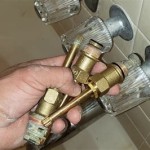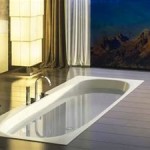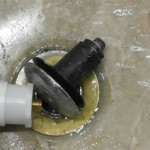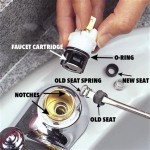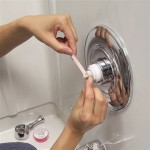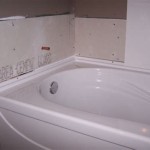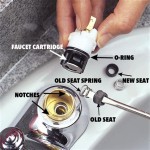Ducks: A Ubiquitous Bathtub Toy
The yellow rubber duck is arguably one of the most recognizable and universally beloved toys, particularly prevalent in the context of bath time. Its simple design, buoyancy, and cheerful appearance contribute to its enduring popularity with children and adults alike. While seemingly a basic plaything, the duck's history, manufacturing process, and cultural significance are more complex than initially apparent. This article will explore various aspects of the rubber duck as a bathtub toy, examining its origins, material composition, safety considerations, and its broader impact on popular culture.
The prevalence of the duck stems from its inherent appeal. Its bright yellow color is visually stimulating, and its relatively small size makes it easy for small hands to grasp and manipulate. The smooth, rounded shape is comfortable to hold, and the characteristic squeak, produced by an air vent, adds an auditory element that engages children during play. Furthermore, its inherent buoyancy guarantees that it floats, making it perfectly suited for water-based activities like bath time. These factors contribute to the duck's effectiveness as a tool for sensory exploration and imaginative play, fostering cognitive development in young children.
Beyond its functional attributes, the rubber duck also holds a certain degree of nostalgia for many adults. It often evokes memories of childhood bath times and carefree play. This sentimental association further solidifies the duck's position as a timeless and cherished object.
The History and Evolution of Rubber Ducks
The story of the rubber duck as a bathtub toy is interwoven with the history of rubber and plastics technology. While rubber existed in various forms for centuries, Charles Goodyear's invention of vulcanization in 1839 revolutionized the rubber industry. This process made rubber more durable, elastic, and resistant to temperature changes, paving the way for its use in a wider range of applications, including toys.
Early rubber toys, including ducks, were often made of hard rubber. These were durable but also less flexible and prone to cracking. The transition to softer, more pliable rubber and eventually vinyl plastic in the mid-20th century significantly improved the safety and appeal of rubber ducks. This shift allowed for the creation of more detailed designs and safer materials for children.
The specific origin of the yellow rubber duck as we know it today remains somewhat ambiguous. Many believe that the first molded rubber ducks appeared in the late 19th or early 20th century, coinciding with the rise of rubber manufacturing. However, these early versions often lacked the characteristic squeak and were not exclusively yellow. The modern, mass-produced yellow rubber duck, often attributed to sculptor Peter Ganine, gained significant popularity in the 1940s and 1950s. Ganine's patented design, featuring a cheerful expression and buoyant construction, helped solidify the duck's status as a beloved bath time companion.
Over time, the design of the rubber duck has evolved to include various sizes, shapes, colors, and themed variations. Ducks are now available representing a wide range of characters, professions, and even historical figures. This adaptability and constant reinvention contributes to the duck's continued relevance in the toy market.
Material Composition and Manufacturing Processes
Modern rubber ducks are typically manufactured from polyvinyl chloride (PVC), a type of plastic. PVC is chosen for its flexibility, durability, and relatively low cost. The manufacturing process begins with the creation of a mold, typically made of metal. Molten PVC is then injected into the mold under pressure, a process known as injection molding.
Once the PVC has cooled and solidified, the mold is opened, and the duck is removed. Excess plastic is trimmed, and any necessary finishing touches are applied. The characteristic squeaker mechanism, a small plastic bellows, is then inserted into the duck's body, typically through a small hole in the bottom. The hole also serves as an air vent, allowing the duck to float and squeak when squeezed.
The final step involves painting and decorating the duck. Non-toxic paints are used to apply the signature yellow color, as well as the details of the eyes, beak, and other features. Quality control measures are implemented throughout the manufacturing process to ensure that the ducks meet safety standards and are free from defects.
Concerns have been raised regarding the use of PVC in toys due to the presence of phthalates, chemicals used to make the plastic more flexible. Some phthalates have been linked to potential health risks, and regulations have been implemented in many countries to restrict their use in children's products. Manufacturers are increasingly exploring alternative materials, such as phthalate-free PVC and other types of plastics, to address these concerns and ensure the safety of their products.
Safety Considerations and Maintenance
The safety of bathtub toys, including rubber ducks, is a paramount concern for parents and caregivers. Several factors contribute to the safety of these toys. The materials used must be non-toxic and free from harmful chemicals. The design should be free of small parts that could pose a choking hazard, and the construction should be durable enough to withstand regular use.
Regulatory bodies, such as the Consumer Product Safety Commission (CPSC) in the United States, set safety standards for toys and conduct testing to ensure compliance. These standards address various aspects of toy safety, including material composition, design, and labeling. It is essential for consumers to purchase rubber ducks from reputable manufacturers that adhere to these safety standards.
Regular cleaning and maintenance are crucial for preventing the growth of mold and bacteria inside rubber ducks. The small hole in the bottom of the duck can trap water, creating a moist environment that is conducive to microbial growth. To clean a rubber duck, it can be submerged in a solution of warm water and mild dish soap. A small brush can be used to scrub the inside of the duck, or white vinegar can be add to help neutralize mold and mildew. It is essential to thoroughly rinse and dry the duck after cleaning. Squeezing the duck repeatedly while rinsing helps to remove any remaining soap or debris.
Some parents opt to seal the hole in the bottom of the duck with glue or silicone to prevent water from entering. However, this can also trap moisture inside the duck, potentially exacerbating the problem of mold growth. Regular cleaning and disinfection remain the most effective strategies for maintaining the hygiene of rubber ducks.
Beyond material composition and cleanliness, parents should supervise children during bathtime to prevent accidents. While rubber ducks are generally safe, they should not be used as chew toys, and children should be discouraged from putting them in their mouths. Regular inspection of the ducks for signs of damage, such as cracks or tears, is also recommended. Damaged ducks should be discarded to prevent potential hazards.
The continued popularity of the rubber duck as a bathtub toy speaks to its enduring appeal. Its simplicity, versatility, and nostalgic associations make it a beloved object for people of all ages. By understanding the history, manufacturing process, and safety considerations associated with rubber ducks, consumers can make informed choices and ensure that these timeless toys continue to bring joy and entertainment for generations to come. The core of its success is the rubber duck's ability to create a positive and playful experience in a mundane setting, turning bath time into a fun and engaging activity.

Big Bath Duck Toy For Kids And S Yellow Floating Perpetual Kid

Playgro Duckie Family Bath Toys Smyths

Big Bath Duck Toy For Kids And S Yellow Floating Perpetual Kid

White Hot Safety Bath Duck Accessories Munchkin

8 Pcs Children S Little Yellow Duck Bath Toys Baby Swimming Bathroom Play Shower For Boys And Girls Com

Novelty Place Float Amp Squeak Six Rubber Duck Family Pack Ducky Baby Bath Toy For Kids Of 6 Com

Big Bath Duck Fun Stuff Toys

Colorful Rubber Ducks Toy Duckies Kids Toddlers Bath Temu

Custom Design Vinyl Bath Duck Toys China Baby And Floating Rubber Made In Com

Fun Time Ducks Infantino
Related Posts


